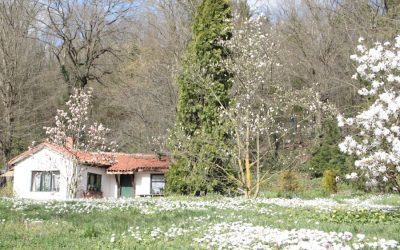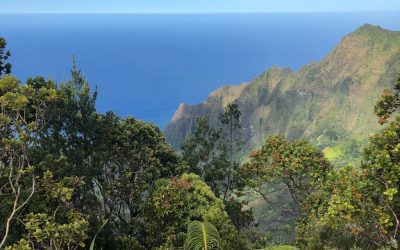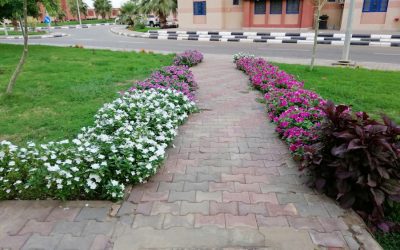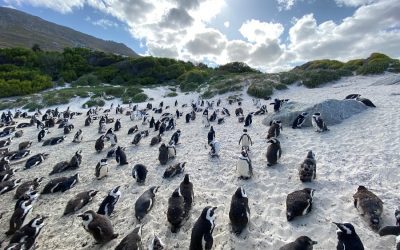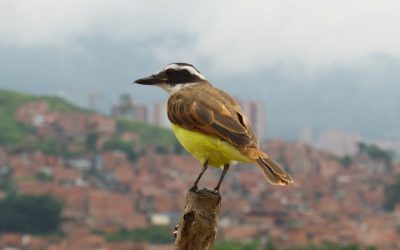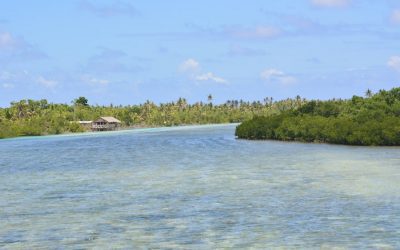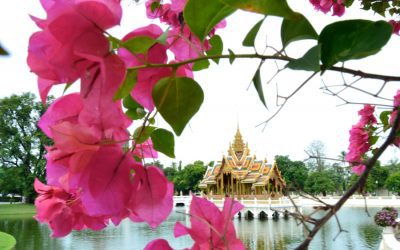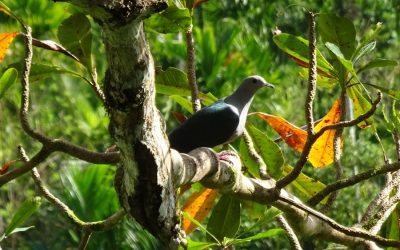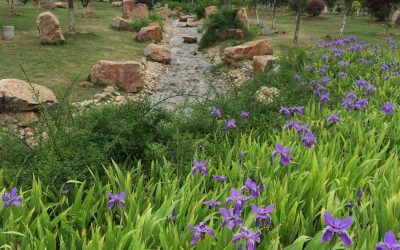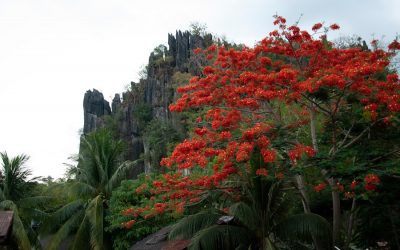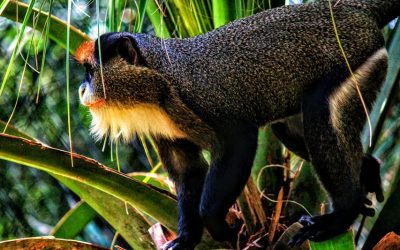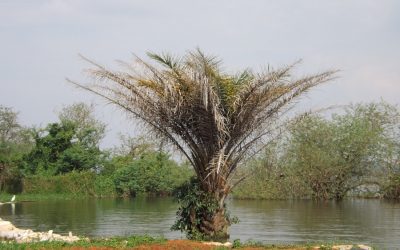World Geography
Geography is the study of the Earth’s landscapes, environments, and the relationships between people and their surroundings. It encompasses both the physical aspects of the Earth, such as its landforms, bodies of water, and climate, as well as the human aspects, including population distribution, cultures, and economies. World geography is a broad field that seeks to understand the complexities of our planet and how humans interact with it. By studying world geography, we can gain a deeper appreciation for the diversity of our planet and the interconnectedness of its various regions.
Geography is a multidisciplinary field that draws on elements of physical science, social science, and humanities. It involves the use of maps, spatial analysis, and geographic information systems (GIS) to understand the Earth’s surface and the processes that shape it. World geography also encompasses the study of human geography, which examines the ways in which people and their activities are distributed across the Earth. By understanding world geography, we can better appreciate the environmental, cultural, and economic challenges facing different regions of the world. This knowledge is crucial for addressing global issues such as climate change, resource management, and international development.
The Five Oceans and Seven Continents
The Earth’s surface is divided into five major oceans: the Pacific, Atlantic, Indian, Southern (or Antarctic), and Arctic Oceans. These vast bodies of water play a crucial role in regulating the Earth’s climate and supporting diverse marine ecosystems. The oceans also serve as important transportation routes and a source of food and other natural resources for human societies around the world.
In addition to the oceans, the Earth’s landmasses are divided into seven continents: Africa, Antarctica, Asia, Europe, North America, Australia (or Oceania), and South America. Each continent has its own unique physical and cultural characteristics, shaped by millions of years of geological processes and human history. From the deserts of Africa to the rainforests of South America, the continents offer a rich tapestry of landscapes and environments for exploration and study.
Major Mountain Ranges and Deserts
The Earth’s surface is also marked by major mountain ranges and deserts that have shaped the planet’s physical and cultural landscapes. The Himalayas, for example, are the highest mountain range in the world and are home to diverse ecosystems and cultures in countries such as India, Nepal, and Bhutan. The Andes in South America, the Rockies in North America, and the Alps in Europe are other prominent mountain ranges that have influenced human settlement patterns and economic activities.
Deserts cover about one-third of the Earth’s land surface and are characterized by low precipitation and extreme temperatures. The Sahara Desert in Africa is the largest hot desert in the world, while the Gobi Desert in Asia is one of the largest cold deserts. Deserts are not only home to unique flora and fauna but have also been important trade routes and cultural crossroads throughout history.
Climate Zones and Biomes
The Earth’s climate is influenced by a variety of factors, including latitude, altitude, ocean currents, and prevailing winds. As a result, the planet is divided into different climate zones, each with its own characteristic weather patterns and ecosystems. The equator, for example, experiences a tropical climate with high temperatures and heavy rainfall, while the polar regions have a cold and dry climate.
These climate zones give rise to different biomes, or large ecological areas characterized by distinct plant and animal communities. The tropical rainforest biome, found near the equator, is home to a diverse array of species and is vital for regulating the Earth’s climate. The grasslands biome, found in regions such as the African savannah and North American prairies, supports grazing animals and has been important for human agriculture throughout history.
Human Geography and Population Distribution
Human geography examines the ways in which people and their activities are distributed across the Earth’s surface. It encompasses topics such as population growth, migration patterns, urbanization, and cultural diversity. Understanding human geography is crucial for addressing global challenges such as poverty, inequality, and environmental degradation.
Population distribution is uneven across the world, with some regions experiencing rapid population growth while others are declining. The majority of the world’s population lives in Asia, particularly in countries such as China and India. Urban areas are also growing rapidly, with more than half of the world’s population now living in cities. This trend has significant implications for infrastructure development, resource management, and social inequality.
Historical and Cultural Geography
Historical geography examines how human activities have shaped the Earth’s landscapes over time. It explores topics such as colonialism, trade routes, and the rise and fall of empires. Cultural geography focuses on how human cultures have developed in different regions of the world and how they interact with their environments.
The Silk Road, for example, was an ancient trade route that connected China with Europe and facilitated the exchange of goods, ideas, and technologies across Eurasia. This historical trade route had a profound impact on the development of cultures and economies along its path. Similarly, cultural geographers study how different societies have adapted to their environments through practices such as agriculture, architecture, and religious beliefs.
The Importance of Geographic Knowledge
Geographic knowledge is crucial for addressing global challenges such as climate change, resource management, and international development. By understanding world geography, we can better appreciate the environmental, cultural, and economic challenges facing different regions of the world. This knowledge is crucial for addressing global issues such as climate change, resource management, and international development.
Geographic knowledge also helps us to understand our interconnectedness with other regions of the world. By studying world geography, we can gain a deeper appreciation for the diversity of our planet and the interconnectedness of its various regions. This understanding can foster a sense of global citizenship and empathy for people from different cultures and backgrounds.
In conclusion, world geography is a complex and multifaceted field that encompasses both physical and human aspects of the Earth’s landscapes. By studying world geography, we can gain a deeper appreciation for the diversity of our planet and the interconnectedness of its various regions. This knowledge is crucial for addressing global challenges such as climate change, resource management, and international development. It also helps us to understand our interconnectedness with other regions of the world and fosters a sense of global citizenship.
FAQs
What is world geography?
World geography is the study of the Earth’s landscapes, environments, and the relationships between people and their environments. It encompasses the physical features of the Earth, as well as the human activity that takes place on it.
Why is world geography important?
World geography is important because it helps us understand the world around us. It provides insights into the physical and human processes that shape our planet, and helps us make informed decisions about how to interact with our environment.
What are the main branches of world geography?
The main branches of world geography include physical geography, which focuses on the Earth’s natural features and processes, and human geography, which examines the relationships between people and their environments.
How does world geography impact our daily lives?
World geography impacts our daily lives in numerous ways, from influencing the weather and climate we experience, to shaping the availability of natural resources and influencing the distribution of populations and cultures around the world.
What are some key concepts in world geography?
Key concepts in world geography include location, place, human-environment interaction, movement, and region. These concepts help geographers understand and interpret the world around them.
Exploring the Flora and Fauna of France
France, a nation renowned for its rich cultural heritage and historical significance, is equally celebrated for its diverse flora and fauna. The country’s varied landscapes, ranging from the snow-capped peaks of the Alps to the sun-drenched beaches of the Mediterranean, provide a multitude of habitats that support an impressive array of plant and animal life. This biodiversity is not merely a backdrop to the French way of life; it is an integral part of the nation’s identity, influencing everything from cuisine to art. The intricate relationships between species and their environments are a testament to the ecological richness that France has to offer. The flora and fauna of France are shaped by its geographical diversity and climatic variations. With over 15,000 species of plants and a wealth of animal life, the country boasts ecosystems that are both unique and vital. From the lush forests of the Vosges to the wetlands of the Camargue, each region presents distinct ecological characteristics. This article delves into the various ecosystems found within France, highlights iconic wildlife, discusses endangered species, and examines conservation efforts aimed at preserving this natural heritage. Summary France is home to a rich and diverse range of flora and fauna, making it a paradise for nature enthusiasts. From the snow-capped Alps to the sun-drenched Mediterranean coast, France boasts a variety of ecosystems, each supporting unique wildlife. Iconic wildlife in France includes the majestic red deer, the elusive lynx, and the charming European hedgehog. Several species in France, such as the European mink and the Corsican red deer, are facing threats to their survival and are classified as endangered. Notable flora...
Exploring the Flora and Fauna of Pitcairn Islands
The Pitcairn Islands, a remote archipelago located in the southern Pacific Ocean, are perhaps best known for their historical significance as the refuge of the mutineers from the HMS Bounty in 1789. This small group of islands, which includes Pitcairn, Henderson, Ducie, and Oeno, is one of the most isolated inhabited places on Earth, situated approximately halfway between South America and New Zealand. The main island, Pitcairn, is home to a population of around fifty residents, descendants of the Bounty mutineers and Tahitians who accompanied them. The islands are governed as a British Overseas Territory, and their unique cultural heritage and natural beauty make them a fascinating subject of study. The geography of the Pitcairn Islands is characterised by rugged terrain, steep cliffs, and lush vegetation. The islands are volcanic in origin, with Pitcairn itself rising dramatically from the ocean. The climate is tropical, with warm temperatures year-round and a wet season that brings heavy rainfall. This environment has fostered a rich biodiversity that is both unique and fragile. The isolation of the islands has allowed for the evolution of distinct species, many of which are found nowhere else on the planet. As such, the Pitcairn Islands represent not only a significant historical site but also an ecological treasure trove that warrants exploration and conservation. Summary The Pitcairn Islands are a group of four volcanic islands in the southern Pacific Ocean, known for their remote location and unique biodiversity. The unique flora of the Pitcairn Islands includes a variety of endemic plant species, such as the rare Henderson Island cabbage tree and the Pitcairn Island pawpaw. The diverse fauna...
Exploring Kuwait’s Flora and Fauna
Kuwait, a small yet strategically significant nation located at the northwestern tip of the Arabian Gulf, is often overshadowed by its more prominent neighbours in terms of biodiversity. However, this desert country boasts a unique array of flora and fauna that have adapted to its harsh climatic conditions. The biodiversity of Kuwait is a reflection of its geographical position, which serves as a crossroads for migratory species and a habitat for endemic plants and animals. The arid landscape, characterised by vast deserts, salt flats, and coastal areas, presents a distinctive ecological tapestry that is both fragile and resilient. The country’s biodiversity is not merely a collection of species; it is an intricate web of life that plays a crucial role in maintaining ecological balance. The harsh environment, with its extreme temperatures and limited rainfall, has shaped the evolution of species that can withstand such conditions. As Kuwait continues to develop economically and urbanise rapidly, understanding and preserving its biodiversity has become increasingly important. This article delves into the unique plant species, wildlife, avian diversity, marine life, conservation efforts, ecotourism opportunities, and the challenges facing Kuwait’s rich natural heritage. Summary Kuwait’s biodiversity is unique and diverse, with a variety of plant and animal species adapted to its desert environment. The unique plant species in Kuwait include the desert hyacinth, desert thumb, and the rare Kuwaiti rock daisy. Kuwait is home to a variety of wildlife, including mammals such as the sand cat and the desert hedgehog, as well as reptiles like the spiny-tailed lizard and the sand boa. Bird watching in Kuwait is a popular activity, with the country being...
Exploring the Flora and Fauna of the Falkland Islands
The Falkland Islands, an archipelago located in the South Atlantic Ocean, are a British Overseas Territory that has captured the imagination of adventurers, naturalists, and historians alike. Comprising over 700 islands, with the two main islands being East Falkland and West Falkland, this remote destination is known for its rugged landscapes, rich biodiversity, and a complex history that includes a long-standing territorial dispute with Argentina. The islands are situated approximately 300 miles from the coast of Argentina and about 600 miles from the nearest point in Antarctica, making them a unique blend of temperate and sub-Antarctic ecosystems. The climate of the Falkland Islands is characterised by strong winds, frequent rainfall, and cool temperatures, which contribute to the distinct ecological zones found throughout the archipelago. The islands are home to a variety of habitats, including grasslands, peat bogs, and coastal areas, each supporting a unique array of flora and fauna. The isolation of the Falkland Islands has allowed for the evolution of species that are not found anywhere else in the world, making them a significant area for biological research and conservation efforts. As such, the Falkland Islands offer a fascinating glimpse into the natural world, attracting visitors who seek to explore their unique ecosystems. Summary The Falkland Islands are a remote archipelago in the South Atlantic, known for their unique flora and fauna. The islands are home to a variety of plant species, including tussock grass, cushion plants, and native orchids. The diverse fauna of the Falkland Islands includes penguins, seals, sea lions, and a wide range of bird species. Conservation efforts in the Falkland Islands focus on protecting...
Exploring Colombia’s Rich Flora and Fauna
Colombia is a country that boasts an extraordinary wealth of biodiversity, ranking as one of the most biologically diverse nations on the planet. With its varied topography, ranging from the Andes mountains to the Amazon rainforest, and its extensive coastlines along both the Caribbean Sea and the Pacific Ocean, Colombia serves as a unique ecological crossroads. This geographical diversity contributes to a multitude of habitats, each supporting a wide array of plant and animal species. The nation is home to approximately 59,000 species of plants, 1,900 species of birds, and over 500 species of mammals, making it a veritable treasure trove for biologists and nature enthusiasts alike. The significance of Colombia’s biodiversity extends beyond mere numbers; it plays a crucial role in the global ecosystem. The country’s rich natural resources provide essential services such as carbon sequestration, water purification, and soil fertility. Furthermore, Colombia’s ecosystems are vital for the livelihoods of millions of people who depend on them for food, medicine, and economic activities. However, this natural wealth is under threat from various human activities, making it imperative to understand and protect Colombia’s unique biodiversity. Summary Colombia is one of the most biodiverse countries in the world, with a wide variety of ecosystems and species. The diverse ecosystems of Colombia include rainforests, mountains, deserts, and coastal areas, each with its own unique flora and fauna. Colombia is home to over 50,000 plant species, many of which are found nowhere else in the world. The fascinating fauna of Colombia includes iconic species such as jaguars, spectacled bears, and colourful birds like the Andean cock-of-the-rock. Threats to Colombia’s biodiversity include deforestation,...
Discovering the Rich Flora and Fauna of Cook Islands
The Cook Islands, a stunning archipelago located in the South Pacific Ocean, is a realm of breathtaking beauty and rich cultural heritage. Comprising 15 islands, the Cook Islands are divided into two groups: the Northern and Southern islands. The capital, Avarua, is situated on Rarotonga, the largest island, which serves as the primary gateway for visitors. The islands are renowned for their pristine beaches, crystal-clear lagoons, and vibrant coral reefs, making them a popular destination for tourists seeking both relaxation and adventure. The unique blend of Polynesian culture and natural splendour creates an enchanting atmosphere that captivates all who visit. The Cook Islands are not only a paradise for beach lovers but also a treasure trove of biodiversity. The islands boast a variety of ecosystems, from lush rainforests to coral reefs teeming with marine life. This ecological diversity is complemented by the rich cultural tapestry woven by the indigenous people, who have inhabited these islands for centuries. The Cook Islands’ flora and fauna are integral to the identity of its inhabitants, who have developed a deep connection with their environment. As we delve into the natural wonders of the Cook Islands, we will uncover the intricate relationships between its ecosystems and the cultural practices of its people. Summary The Cook Islands are a stunning South Pacific nation with a rich biodiversity and unique ecological features. The diverse flora of the Cook Islands includes a wide variety of tropical plants, flowers, and trees, making it a paradise for nature lovers. The fascinating fauna of the Cook Islands includes a range of bird species, marine life, and land animals, offering plenty...
Exploring Thailand’s Rich Flora and Fauna
Thailand is a country renowned for its rich biodiversity, which is a product of its varied ecosystems. The geographical landscape of Thailand ranges from mountainous regions in the north to the tropical beaches in the south, creating a multitude of habitats that support an array of flora and fauna. The northern highlands are characterised by rugged mountains and lush forests, while the central plains are dominated by fertile rice paddies. The eastern region features coastal mangroves and coral reefs, while the southern peninsula is home to stunning limestone cliffs and pristine beaches. This diversity in geography contributes significantly to the ecological variety found within the country. The climatic conditions in Thailand further enhance its ecological richness. The country experiences a tropical monsoon climate, which results in distinct wet and dry seasons. This climate supports a wide range of ecosystems, including rainforests, deciduous forests, grasslands, and wetlands. Each ecosystem hosts unique species adapted to their specific environments. For instance, the rainforests of the south are teeming with life, while the dry forests of the north support different species that have adapted to less moisture. This intricate web of ecosystems not only sustains wildlife but also provides essential resources for local communities, making Thailand a vital area for both conservation and sustainable development. Summary Thailand boasts a wide range of diverse ecosystems, including tropical rainforests, mangrove forests, and coral reefs. The exotic flora of Thailand includes orchids, lotus flowers, and the world’s largest flower, the Rafflesia. Thailand is home to unique fauna such as the Asian elephant, Malayan tapir, and the elusive clouded leopard. Conservation efforts in Thailand focus on protecting...
Discovering the Biodiversity of Panama: The Flora and Fauna
Panama, a narrow isthmus connecting North and South America, is a treasure trove of biodiversity. This small Central American nation boasts an extraordinary variety of ecosystems, ranging from lush rainforests to coastal mangroves, and from mountainous regions to vibrant coral reefs. The geographical position of Panama, coupled with its unique climatic conditions, has fostered an environment where countless species thrive. The country is home to over 10,000 plant species, 1,500 species of vertebrates, and an astonishing array of invertebrates, making it one of the most biodiverse regions on the planet. The significance of Panama’s biodiversity extends beyond its borders; it plays a crucial role in global ecological health. The rich ecosystems contribute to carbon sequestration, water purification, and soil fertility, while also providing habitat for countless species. Furthermore, Panama serves as a critical migratory corridor for numerous birds and other wildlife. The intricate web of life found within its borders is not only vital for the local environment but also for the overall health of the planet. Understanding and preserving this biodiversity is essential for maintaining ecological balance and ensuring the survival of many species. Summary Panama is home to a rich and diverse array of flora and fauna, making it a hotspot for biodiversity. The flora of Panama includes over 10,000 species of plants, with a high level of endemism. The diverse fauna of Panama includes over 200 species of mammals, 900 species of birds, and numerous reptiles and amphibians. Panama is home to many endemic species, meaning they are found nowhere else in the world. Threats to biodiversity in Panama include deforestation, habitat destruction, and climate change,...
Exploring the Flora and Fauna of South Korea
South Korea, a nation characterised by its rapid industrialisation and urban development, is also home to a remarkable array of biodiversity. Nestled on the Korean Peninsula, the country boasts a variety of ecosystems ranging from temperate forests and wetlands to coastal regions and mountainous terrains. This diverse landscape supports a wealth of flora and fauna, some of which are endemic to the region. The interplay between South Korea’s geographical features and its climatic conditions has fostered an environment where unique species can thrive, making it a significant area for biological research and conservation. The importance of biodiversity in South Korea extends beyond mere aesthetics; it plays a crucial role in maintaining ecological balance and supporting human livelihoods. The rich variety of species contributes to ecosystem services such as pollination, water purification, and soil fertility. However, the pressures of urbanisation, pollution, and climate change pose significant threats to this delicate balance. Understanding and preserving South Korea’s biodiversity is not only vital for the environment but also for the cultural heritage and economic sustainability of the nation. Summary South Korea is home to a diverse range of plant and animal species, making it a hotspot for biodiversity in East Asia. Unique plant species in South Korea include the Korean fir, Korean pine, and the rare Korean ginseng, which are all important to the country’s ecosystem. Native animal species in South Korea include the endangered Amur leopard, Asiatic black bear, and the Korean water deer, all of which are protected under conservation efforts. Conservation efforts in South Korea focus on protecting endangered species, restoring habitats, and promoting sustainable practices to preserve the...
Exploring Fiji’s Rich Flora and Fauna
Fiji, an archipelago nestled in the South Pacific Ocean, is renowned for its stunning landscapes, vibrant cultures, and rich biodiversity. Comprising over 300 islands, the nation boasts a unique blend of ecosystems that range from lush rainforests to coral reefs teeming with marine life. The geographical isolation of these islands has led to the evolution of a plethora of endemic species, making Fiji a hotspot for biodiversity. This remarkable variety is not only a testament to the resilience of nature but also a crucial component of the global ecological balance. The intricate web of life found in Fiji plays a vital role in sustaining the environment, supporting local communities, and attracting visitors from around the world. The significance of Fiji’s biodiversity extends beyond its aesthetic appeal; it is integral to the livelihoods of its inhabitants. The natural resources provided by the islands support agriculture, fisheries, and tourism, which are essential for the economy. However, this delicate balance is increasingly threatened by human activities and climate change. Understanding and appreciating Fiji’s biodiversity is paramount for fostering conservation efforts and ensuring that future generations can enjoy the natural wonders that the islands have to offer. This article delves into the unique flora and fauna of Fiji, the conservation initiatives in place, and the traditional knowledge that underpins the relationship between the Fijian people and their environment. Summary Fiji is home to a rich and diverse range of plant and animal species, making it a hotspot for biodiversity. The flora of Fiji is unique and diverse, with a wide variety of plant life including many endemic species found nowhere else in the...
Exploring the Rich Flora and Fauna of Congo (Kinshasa)
Congo (Kinshasa), officially known as the Democratic Republic of the Congo (DRC), is a vast and resource-rich nation located in Central Africa. It is the second-largest country on the continent, covering an area of approximately 2.34 million square kilometres. The DRC is bordered by nine countries, including Uganda, Rwanda, and Angola, and boasts a population of over 90 million people, making it one of the most populous nations in Africa. The capital city, Kinshasa, is situated on the banks of the Congo River, which serves as a vital artery for trade and transportation within the region. The DRC’s rich cultural tapestry is woven from over 200 ethnic groups, each contributing to a vibrant mosaic of languages, traditions, and customs. The DRC is not only significant for its human diversity but also for its extraordinary natural wealth. The country is home to the Congo Basin, the second-largest rainforest in the world, which plays a crucial role in global climate regulation and biodiversity preservation. This immense forested area is a sanctuary for countless species of plants and animals, many of which are endemic to the region. The DRC’s natural resources extend beyond its forests; it is also rich in minerals such as cobalt, copper, and diamonds, which have attracted international interest and investment. However, this wealth has often been accompanied by conflict and exploitation, raising questions about sustainable development and conservation in a country that is both a treasure trove of biodiversity and a battleground for human rights. Summary Congo (Kinshasa) is a country in Central Africa known for its rich biodiversity and stunning natural landscapes. The diverse ecosystems of Congo...
Exploring the Biodiversity of Congo (Brazzaville)
Congo (Brazzaville), officially known as the Republic of the Congo, is a nation located in Central Africa, bordered by Gabon to the west, Cameroon to the northwest, the Central African Republic to the north, the Democratic Republic of the Congo to the east and south, and the Atlantic Ocean to the southwest. The capital city, Brazzaville, sits on the banks of the Congo River, directly across from Kinshasa, the capital of the Democratic Republic of the Congo. This geographical positioning not only makes it a significant political hub but also a cultural melting pot, where various ethnic groups and traditions converge. The Republic of the Congo is often overshadowed by its larger neighbour, yet it boasts a wealth of natural resources and biodiversity that are crucial to its identity and economy. The country is characterised by its vast rainforests, savannahs, and river systems, which are home to an array of flora and fauna. The Congo Basin, one of the largest tropical rainforest areas in the world, plays a pivotal role in global ecology and climate regulation. The rich biodiversity found within these ecosystems is not only vital for environmental health but also for the livelihoods of local communities. As we delve deeper into the natural wonders of Congo (Brazzaville), it becomes evident that this nation is a treasure trove of ecological significance, deserving of both appreciation and protection. Summary Congo (Brazzaville) is a country in Central Africa known for its rich biodiversity and natural beauty. The flora of Congo (Brazzaville) is incredibly diverse, with a wide variety of plant species found in its forests and savannas. Congo (Brazzaville) is...
